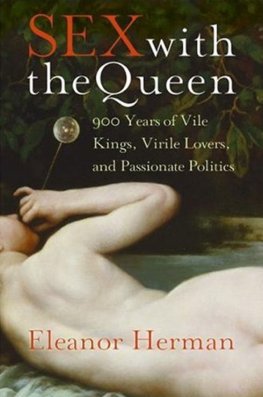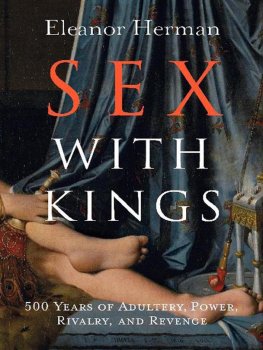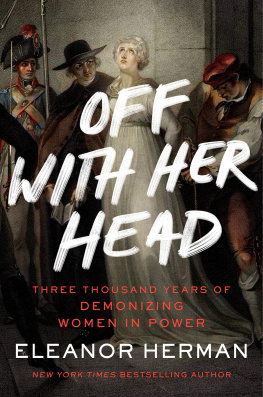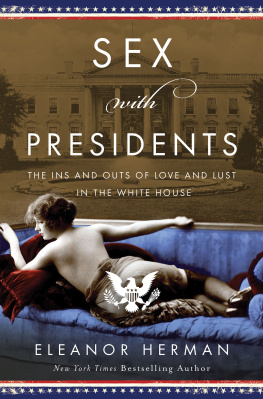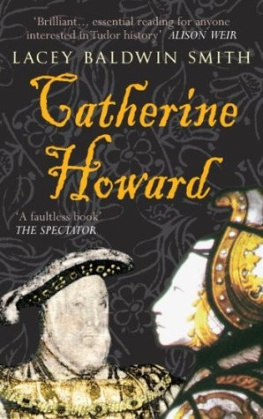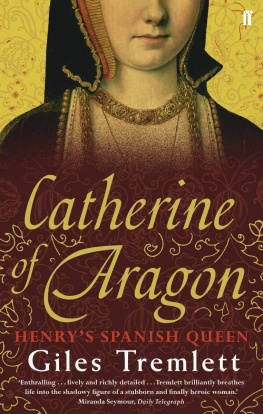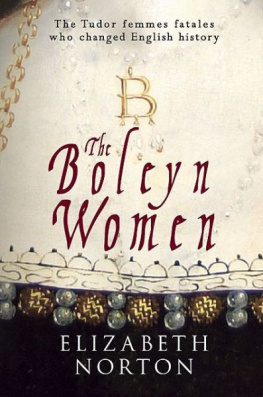Eleanor Herman
SEX WITH THE QUEEN
900 Years of Vile Kings, Virile Lovers, and Passionate Politics
To my husband, Michael Dyment.
If all queens had been married to a prince like you, they would never have committed adultery.

That wife alone unsullied credit wins Whose virtues can atone her husbands sins. Thus, while the man has other nymphs in view, It suits the woman to be doubly true.
RICHARD SHERIDAN
VIRILE KINGS, CHASTE QUEENS
LUSCIOUS MISTRESSES GRACED THE BEDS OF MOST EUROPEAN kings for hundreds of years, pocketing eye-popping salaries and sometimes ruling nations. Indeed, between the sixteenth and eighteenth centuries, the position of royal mistress was almost as official as that of prime minister. She influenced the arts, charmed foreign ambassadors, and appointed ministers. Her rooms were often grander than those of the queen, her gowns more gorgeous, her jewels more dazzling.
While adultery was never lauded, judgment was often mute when the king took a mistress; he had been forced for political reasons to marry an unattractive, awkward foreign princess with whom he had absolutely nothing in common. In 1662 the tall, swarthy Charles II of England wed the tiny bucktoothed Princess Catherine of Portugal. Much to his brides chagrin, Charles refused to give up his highly sexed auburn-haired mistress, Barbara, Lady Castlemaine.
Charles explained that he was no atheist but he could not think God would make a man miserable for taking a little pleasure out of the way.1 Over the years, Charles took a great deal of pleasure out of the waythe darkly elegant Frenchwoman Louise de Kroualle, the spunky actress Nell Gwynn, the sleekly bisexual Italian Hortense Mancini, and many more.
In 1660 the handsome Louis XIV of France married his first cousin, Princess Marie-Thrse of Spain, the dwarfish byproduct of generations of inbreeding. Though spared the drooling insanity which had plagued many of her ancestors, Marie-Thrse had a limited understanding and found herself adrift in the most witty, polished court in Europe. Louis placated himself first with the shy pretty Louise de La Vallire. After seven years he found himself racing into the arms of Athnas de Montespan, a magnificent tawny lioness who kept him ensnared for thirteen years. He enjoyed numerous lesser mistresses, however, including the tall redheaded princesse de Soubise, and the breathtaking blonde Marie-Anglique de Fontanges.
In 1725, at the age of fifteen, Louis XV married the dowdy twenty-two-year-old Polish princess Marie Leczinska for her familys renowned fertility. Her own father, King Stanislaus, proclaimed Marie to be one of the two dullest queens in Europe, the other dull queen being his own wife. Marie spent her mornings in prayer, her afternoons doing embroidery, and her evenings playing cards. Her husband, who grew into a witty and cultured bon vivant, remained faithful for eight years, after which he chose four sisters as his mistresses, followed by the cultured Madame de Pompadour, and lastly the talented prostitute Madame du Barry.
Princesses were raised to accept their future husbands philandering with admirable nonchalance. When the heir to the French throne, Charles-Ferdinand, the duc de Berry, was assassinated in 1820, his wife, Duchess Marie Caroline, was pregnant. Visiting a certain city a few months after her husbands death, she was appealed to by twenty poor women, each one claiming also to be carrying the dead dukes child and asking for alms. Duchess Marie Caroline paused, considered, and replied, It is quite possible. My husband spent a whole week in this neighborhood at the time in question.2
In 1717 Czar Peter the Great of Russia and his wife, the good-natured Empress Catherine, toured the European capitals. At the court of Prussia, Princess Wilhelmina wrote of the empress, She had with her a retinue of four hundred so-called ladies. Almost every one of these creatures carried a richly dressed child in her arms, and when asked if the child were hers, replied, bowing and scraping after the Russian fashion: The Czar did me the honor to give me this child.3
Where was the queen, we might wonder, as her husband laughed, and flirted, and planned political strategy with his mistress? Perhaps she was fulfilling her primary duty for the nationbelching forth as many royal children as her overwrought uterus could bear. Most likely she was on her knees in prayer, interceding with God for the prosperity of her adopted country. Or she was carrying out the queens traditional tasks of dispensing charity to the poor and mercy to the condemned. And when all else failed, there was always embroidery, an art at which neglected queens usually excelled. The majority of queens would never have dreamed of paying their straying husbands back in kind by jumping in the sack with a dashing courtier. If these queens never won their husbands ardor, they at least earned their respect.
But not all European queens were dull and pious and married to handsome clever husbands. In dozens of instances, the exact opposite was true. Beautiful intelligent princesses were forced into marriage with royal ogressadistic, foaming at the mouth, physically repulsive, mentally retarded, or sexually impotent and in some cases all of the above. Casting about a court bristling with testosterone in the most delectable shapes, many queens glanced quickly back at their embroidery and said a Hail Mary to ward off temptation. Many another stared hard and, heart racing, threw down her embroidery, dropped her rosary on the floor, and chose a lover.
The queens choice often fell on a swashbuckling general, virility in boots, whose manly stride across polished parquet floors made her weak-kneed with desire. A witty courtier, his masculinity varnished with a sparkling layer of elegance, often won the queens heart. Perhaps she would select a brilliant politician whose cunning insight would help her gain control of the nation; oddly, some of these politicians were draped in the robes of a bishop or cardinal. One empress found her lover in the church choir; she was thunderstruck by a young Adonis with the voice of an angel and quickly got him out of the house of God and into her royal four-poster.
While kings felt compelled to take mistresses to enhance their virile royal image, queens, on the other hand, were supposed to emulate the mother of Christ. Chastity, mercy, patience, and obediencethese were the qualities expected of a queen.
As early as the fifth century, the image of the Virgin, Mother of the Savior of the World, became blurred with the image of the queen, mother of the savior of the realm. Both Virgin and queen were often portrayed holding a baby. The Virgin morphed into the Queen of Heaven and was often painted wearing a crown and coronation robesthough it is safe to assume that Mary, wife of a Judean carpenter, never possessed any such luxuries. The earthly queen was often depicted bestowing the heavenly blessing of the Virgin, as if she were the Virgin herself.
To compound the parallel images, by the Middle Ages queens marriages, coronations, and burials were made to fall on dates sacred to the Virgin Mary. Surely no queen personified the Virgin as closely as Elizabeth I of England (15331603) who was, ironically, Protestant. Elizabeth was truly a virginwe think. It is possible she had an affair as a young queen with Robert Dudley, the Earl of Leicester, but those suitors of later years, Sir Walter Raleigh; Robert Devereux, the Earl of Essex; Sir Thomas Heneage; and Sir Christopher Hatton, were admirers held firmly at arms length.

